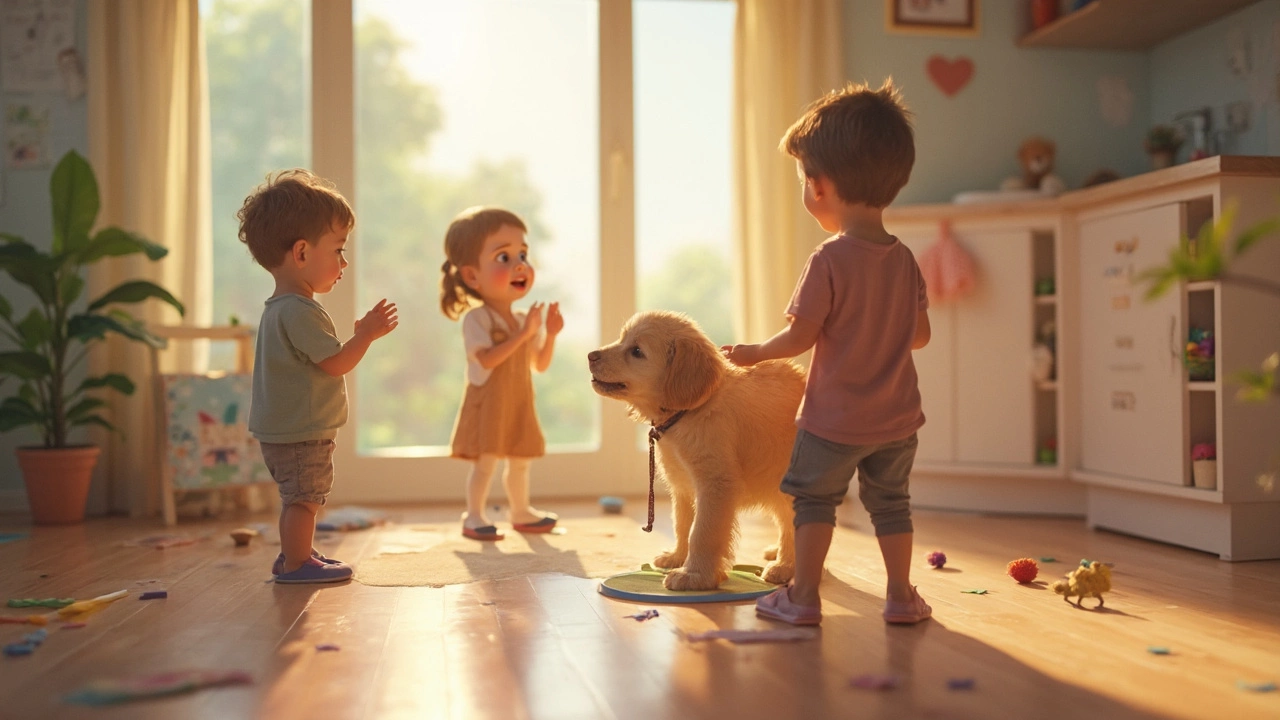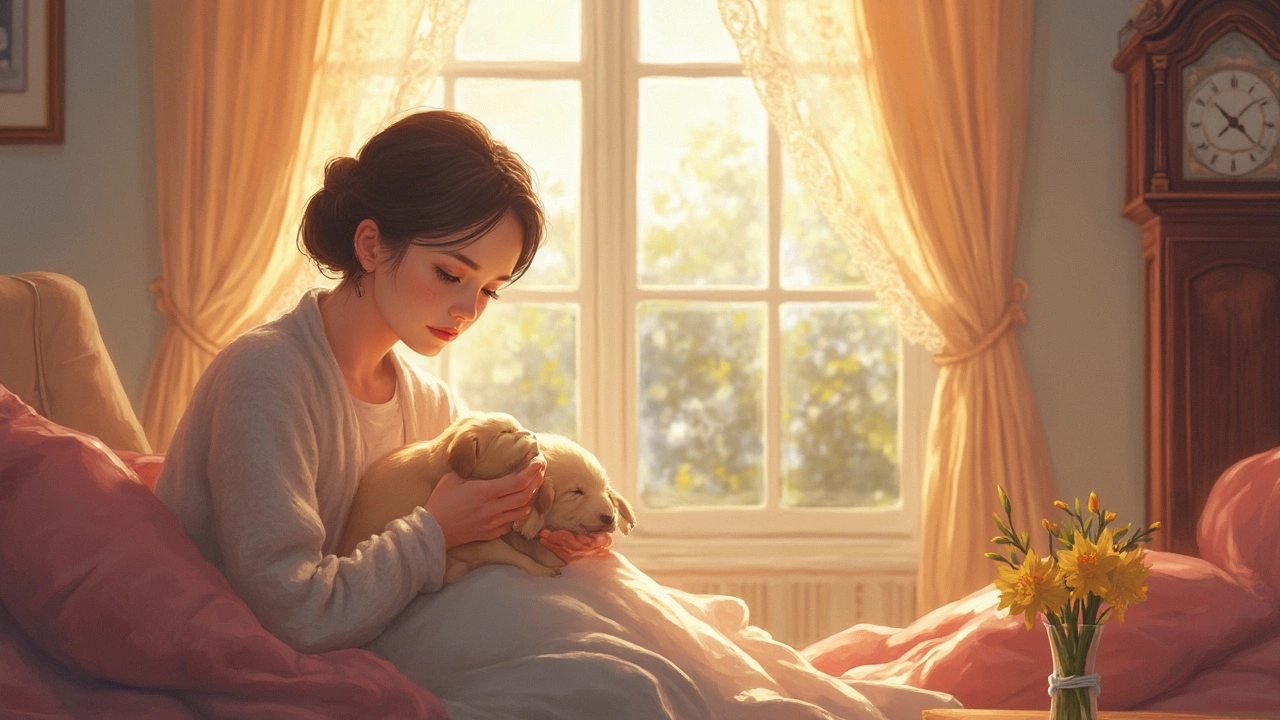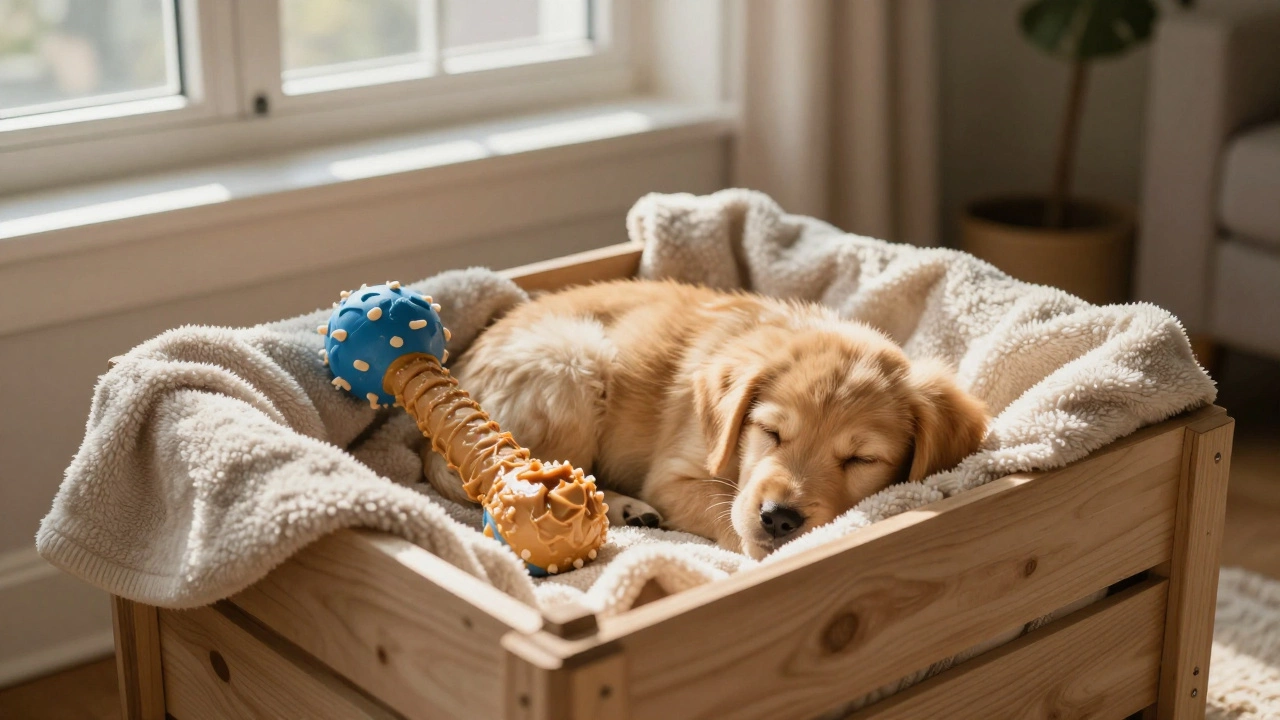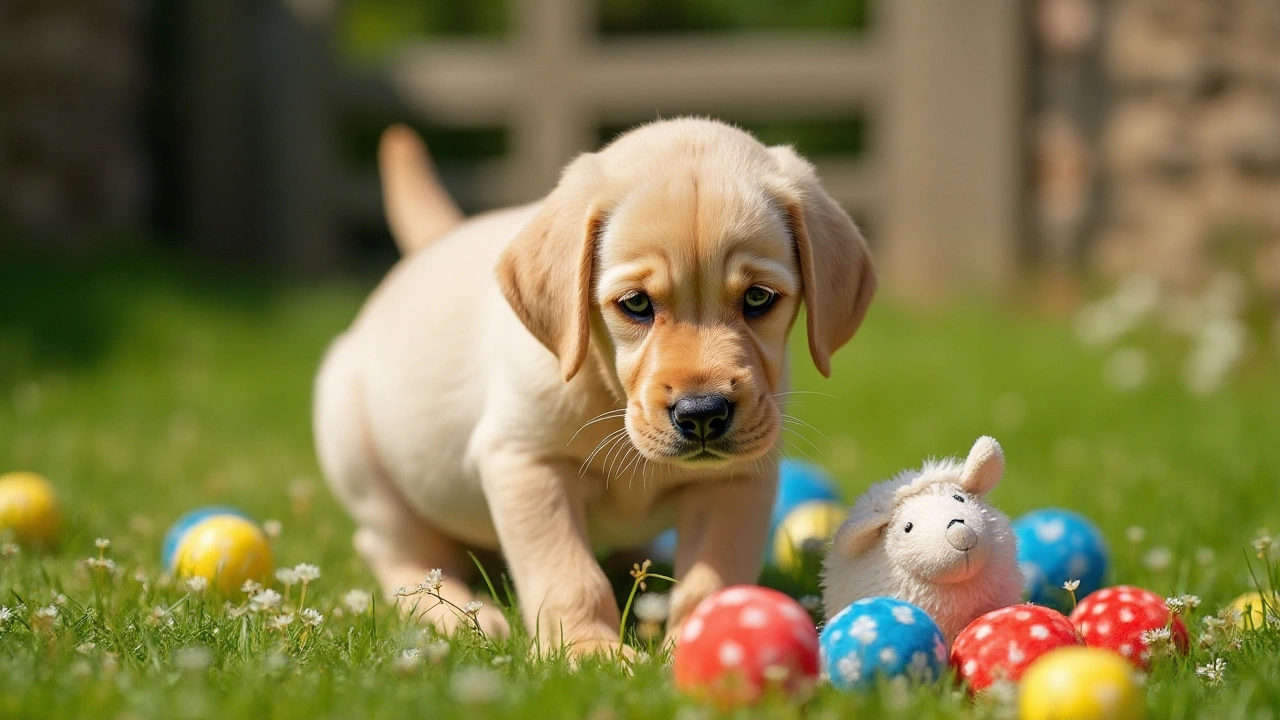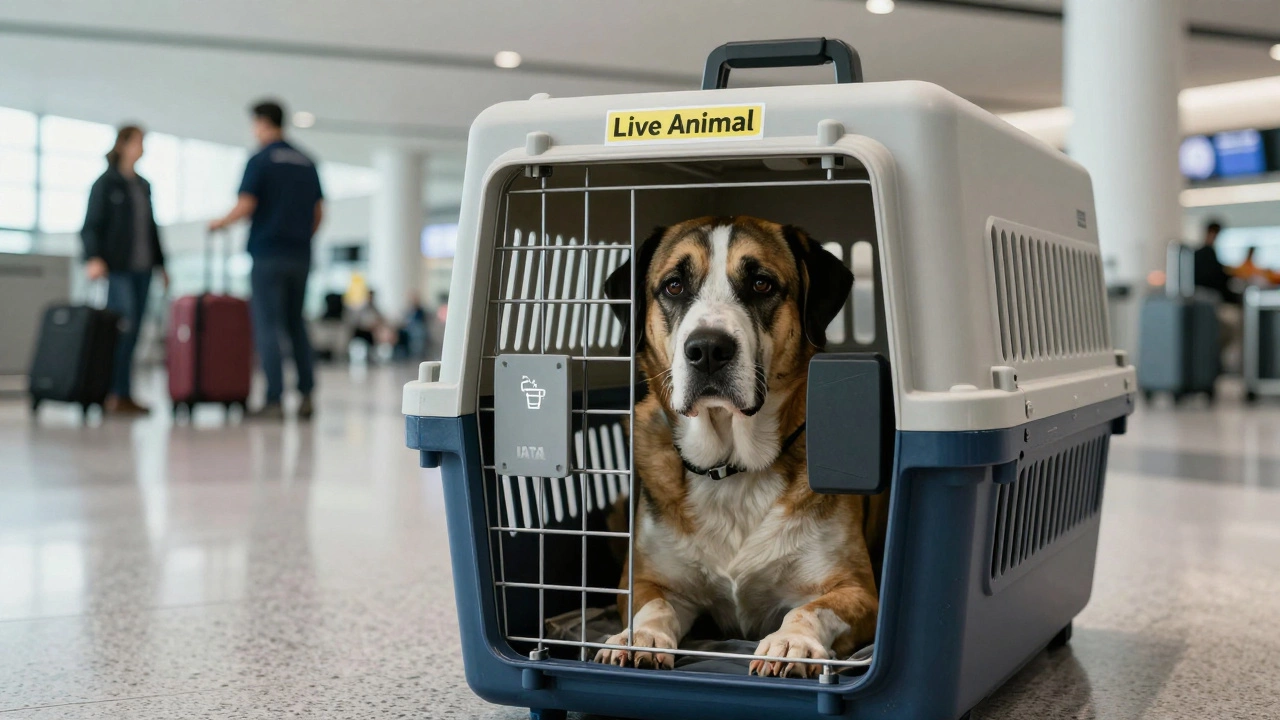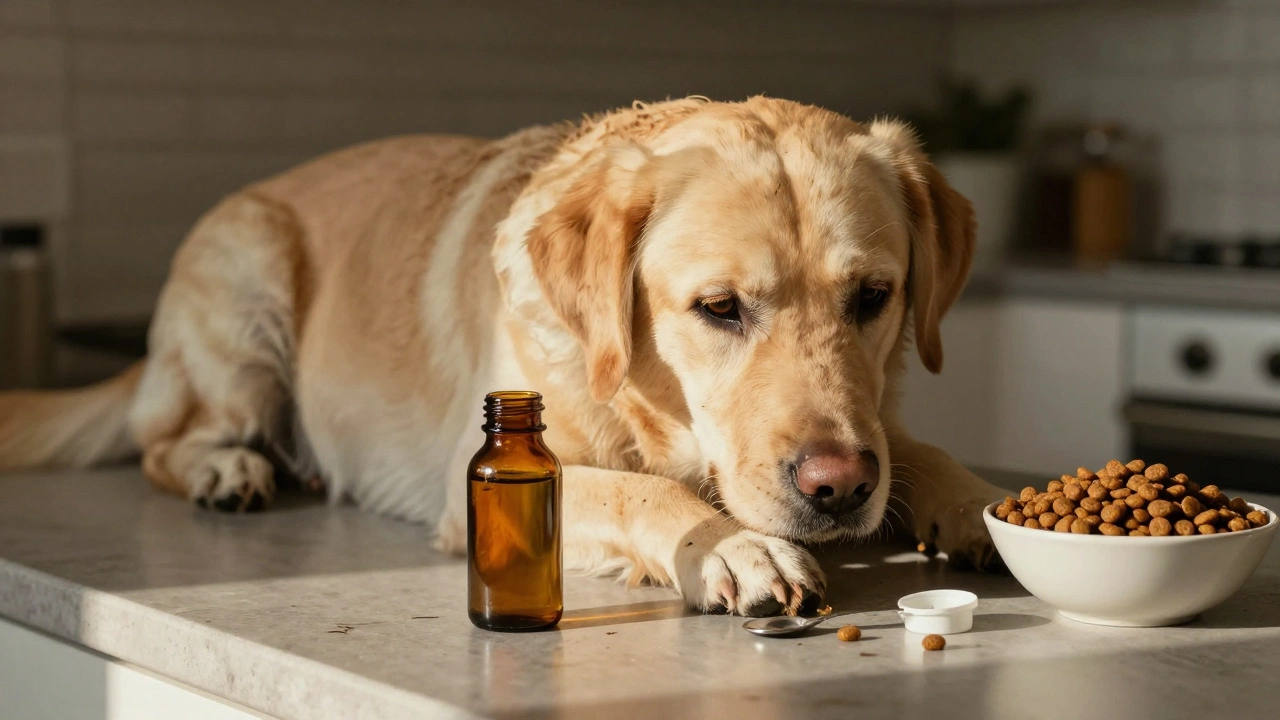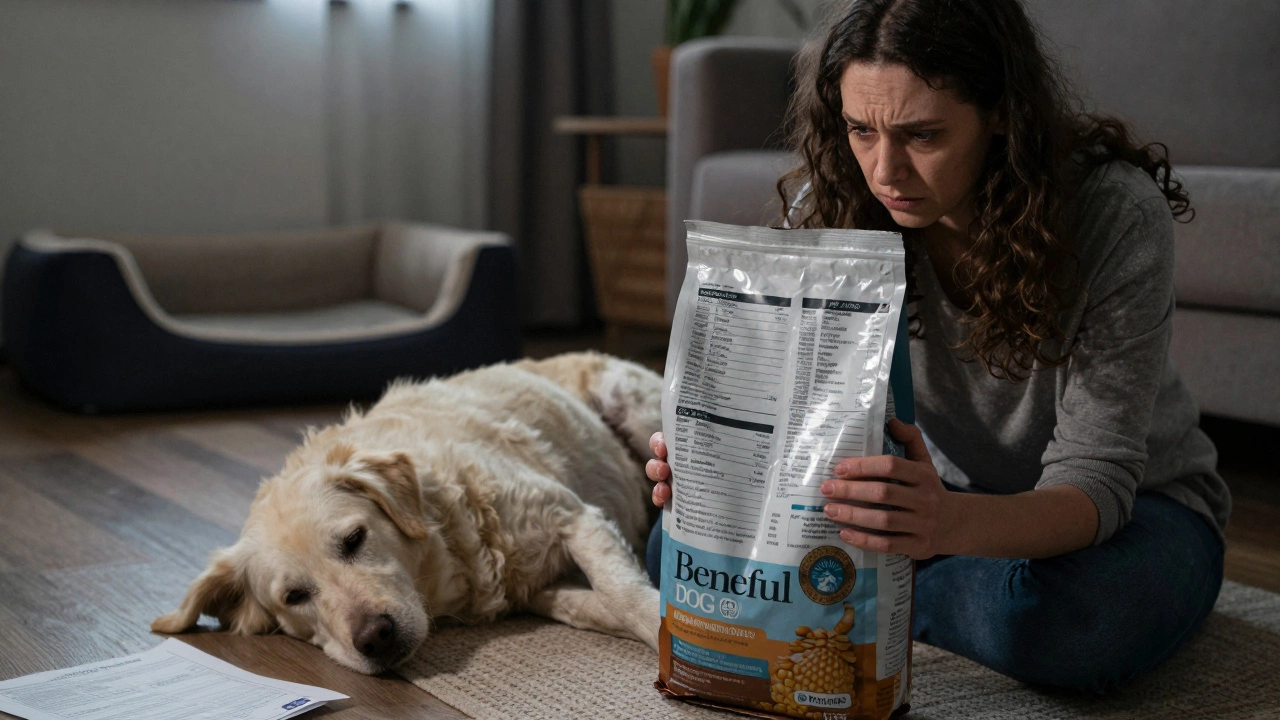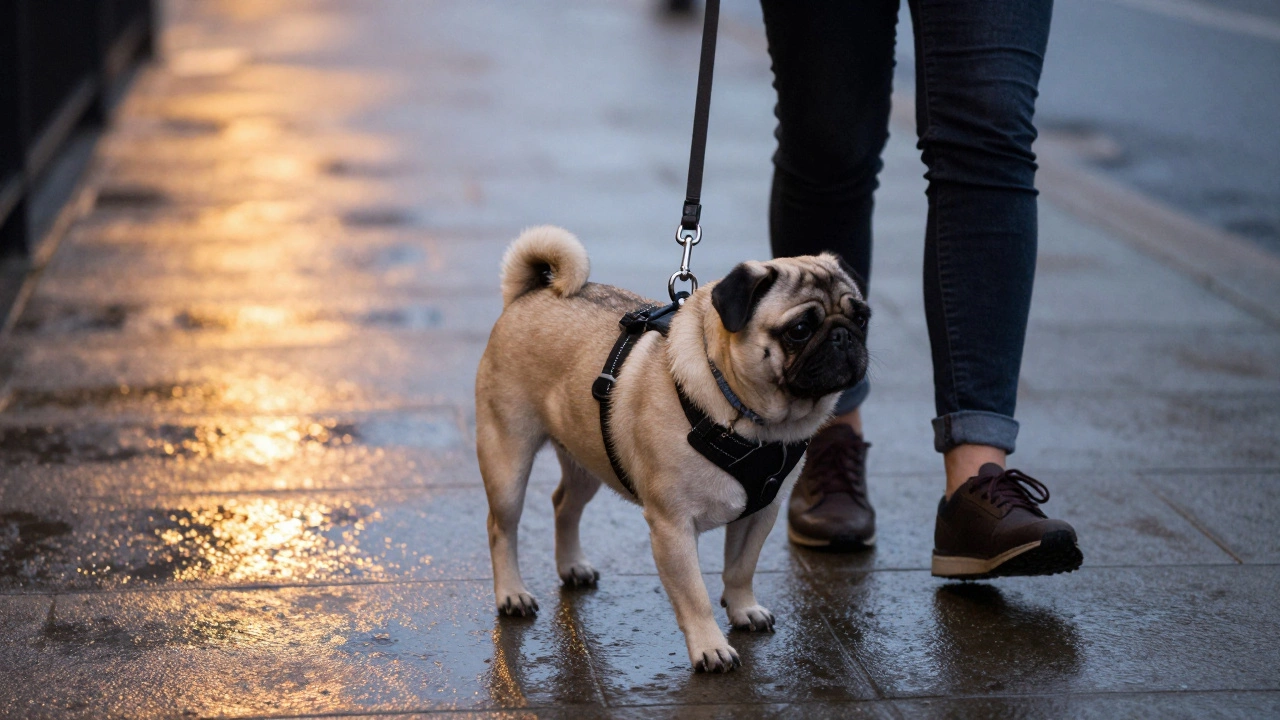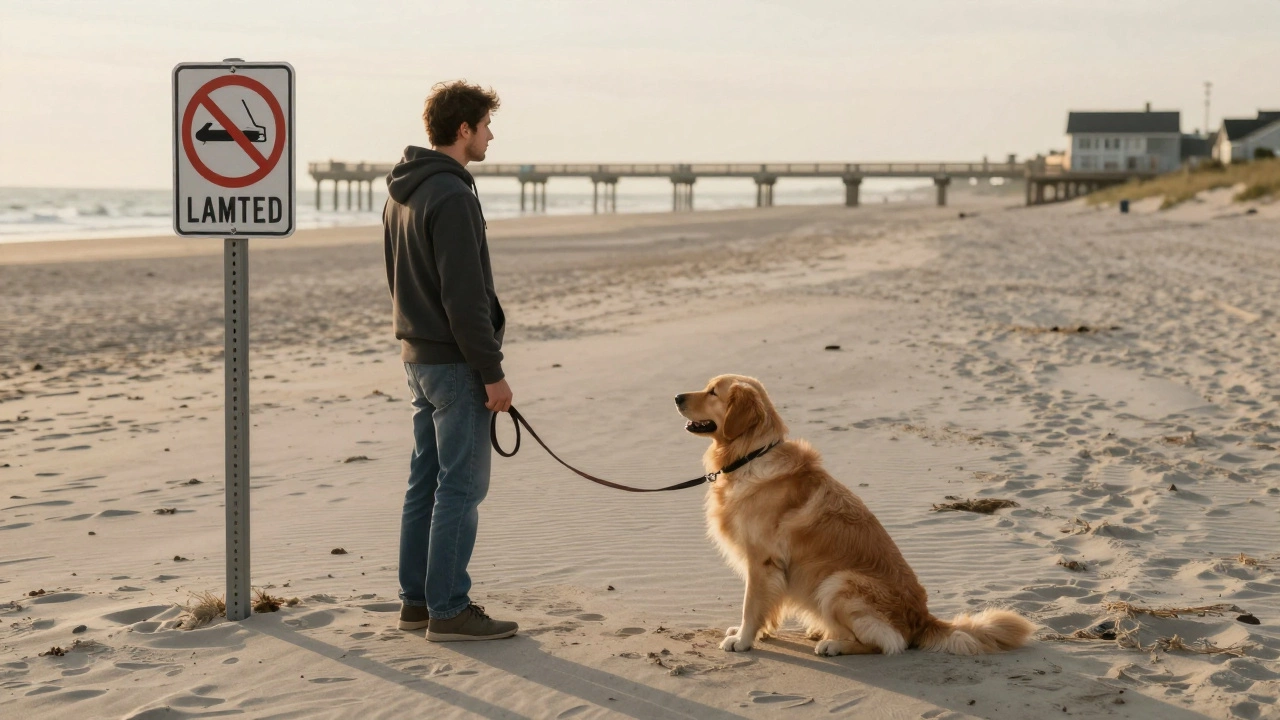Potty training your new puppy can feel like it’ll take forever, especially when you’re cleaning up puddles at 2 AM. The real answer? It usually takes anywhere from a couple of weeks to half a year. Yep, six months sounds scary but that’s for the stubborn or distracted pups. Most settle into a routine after a few months if you stick with it.
Puppies aren’t born knowing that your expensive rug isn’t a toilet. They need to figure out your home’s rules, and that just takes time and a lot of patience. Even the smartest breeds can have setbacks—growth spurts, excitement, a new home, or even a new toy can throw things off for a day or two. Consistency is the secret sauce—if you always take them out after eating, sleeping, or playing, you’ll see faster results. Some pups even start connecting their favorite toys with outdoor fun, which surprisingly helps them remember where to go.
- How Long Potty Training Really Takes
- What Affects Your Puppy’s Progress?
- Mistakes That Slow You Down
- Tricks and Tools (Yes, Toys Help!)
- When to Worry (and What’s Actually Normal)
How Long Potty Training Really Takes
If you’ve got a new puppy, the truth is, puppy potty training is not a weekend job. Most puppies need between 2 to 6 months to consistently go outside. That’s if you stick to a routine and don’t cheat with shortcuts. Some pups catch on in just a few weeks, but the stubborn or easily distracted ones might drag it out longer. If your little furball is under 12 weeks when you bring them home, they might take even longer because their tiny bladders just aren’t ready.
Here’s something wild: by four months, about half of puppies can make it through the night without an accident. But daytime control is a whole different story. It’s normal for young puppies to need to go out every couple of hours. The rule of thumb? Add one hour to their age in months—so a 3-month-old can usually wait three hours between potty breaks. But don’t push it or you’ll end up with regrets on your carpet.
If you’re curious how typical progress breaks down, check this out:
| Puppy Age | Average Potty Break Interval | Chances of Nighttime Accident |
|---|---|---|
| 8 weeks | Every 2 hours | High |
| 12 weeks | Every 3 hours | Possible |
| 16 weeks | Every 4 hours | Drops quickly |
| 6 months | Every 5-6 hours | Rare |
Don’t forget, small breeds often need even more breaks—they just can’t hold it as long. And if you’re wondering, the quickest potty training stories always have one thing in common: the owners are super consistent. Skipping a few trips or not watching your puppy after meals just stretches out the whole puppy potty training timeline.
So, set your expectations: you’ll see big improvements by month three or four, but expect some slips now and then until at least six months. Every puppy is different, but most land somewhere in that rough six-month window before you can finally stop scanning the floor for surprise puddles.
What Affects Your Puppy’s Progress?
Not every pup learns at the same speed, and that’s not just bad luck. There are a few key factors that mess with the whole puppy potty training timeline. Some are obvious, others catch people off guard.
- Age: Tiny puppies (like eight weeks old) just physically can’t hold it very long. Their bladders are, well, puny. As they grow, they can go longer between trips outside.
- Breed: Smaller breeds tend to need more frequent bathroom breaks because of their smaller bladders and higher metabolism. Bigger breeds sometimes ‘get it’ faster simply because they can wait longer between potty trips.
- Prior Living Situations: Puppies from breeders or homes where they learned not to mess their sleeping spots usually catch on quicker. Rescue pups or ones used to going anywhere might need more time to adjust.
- Routine: Consistent schedules help tremendously. Puppies thrive on predictability. If mealtimes, playtimes, and trips outside are all over the place, expect more accidents.
- Supervision: The fewer chances your pup gets to make mistakes, the faster they learn. If you can’t watch closely, crate training is a lifesaver.
Sometimes, even new toys can help speed things up. For example, giving your pup a special toy to play with outside can make them excited to go out—and maybe get their business done quicker so play can start. Also, using puppy toys that keep them busy indoors means you’ll recognize the signs they need to go sooner, simply because you’re watching more closely.
Check out this comparison of factors and their typical effects on housebreaking speed:
| Factor | Speeds Up? | Slows Down? |
|---|---|---|
| Consistent Schedule | Yes | No |
| Small Breed Size | No | Yes |
| Prior Training | Yes | No |
| Unsupervised Time | No | Yes |
| Age (very young) | No | Yes |
If things feel slow, it’s usually just your pup’s age, breed, or a little inconsistency. Stay patient and keep an eye on those patterns.
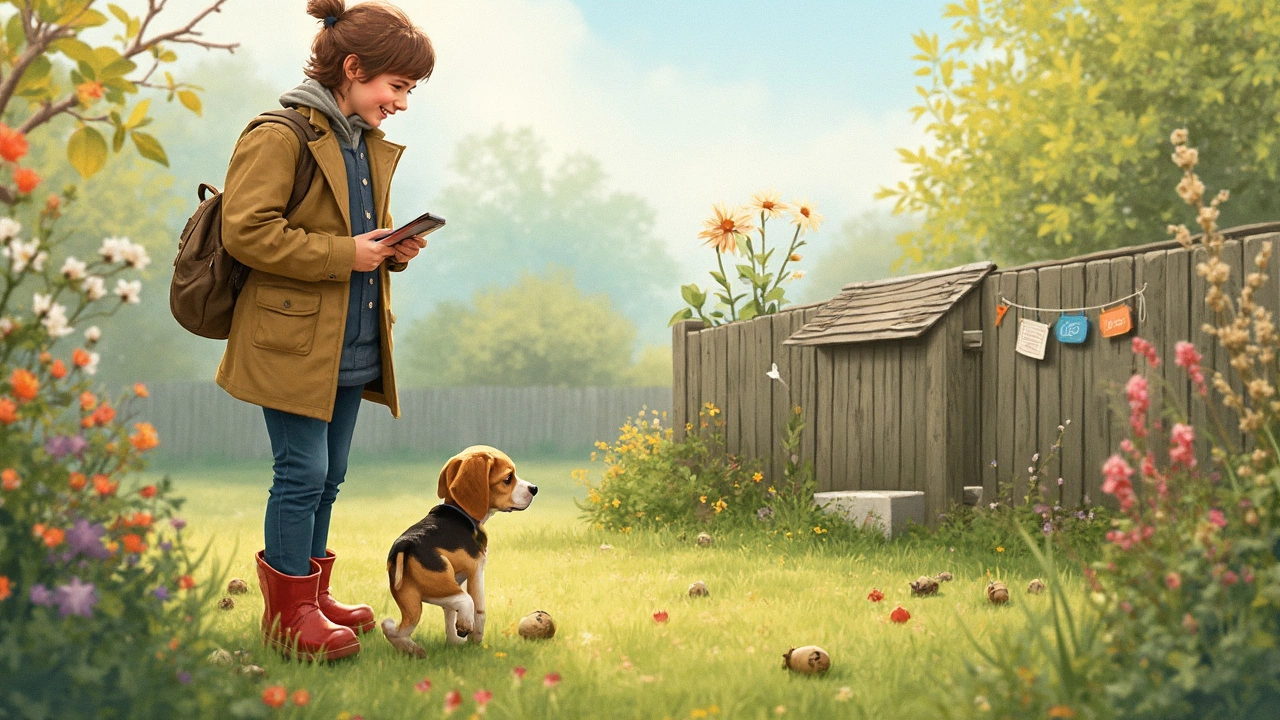
Mistakes That Slow You Down
Some of the most common speed bumps in puppy potty training are totally avoidable. People usually mean well, but it’s easy to slip up—especially when you’re tired or frustrated. A few classic blunders will make the whole thing take longer than it should.
- Inconsistency: Skipping walks or waiting too long between bathroom breaks is a surefire way to confuse your pup. They thrive on routine, so even changing up the schedule by an hour can throw them off.
- Not Enough Supervision: If you leave your puppy alone in the house, they’ll probably sneak off to pee in a corner. Using baby gates or a crate helps you keep eyes on them, which means you can catch accidents before they happen.
- Punishing Accidents: This is a big one. Yelling or scolding after an accident only makes your pup anxious. They won’t link your anger to the mess—they’ll just get sneaky about hiding future accidents. Stick to positive rewards instead.
- Skipping Rewards: If you’re not handing out treats or playing with their favorite puppy toys after they do their business outside, you’re missing a chance to reinforce the right behavior. Immediate rewards matter—a lot.
- Using the Wrong Cleaner: Regular cleaners don’t always get rid of the smell for dogs. If they can sniff out old pee, they’ll think it’s okay to go there again. Go for an enzyme cleaner to break down every last trace.
Some owners set their pups up to fail without knowing it. For example, expecting too much at once—like letting a three-month-old puppy roam the whole house—is just asking for accidents.
To see this in numbers, a 2023 survey of new pet owners showed that almost 60% admitted to at least one of these mistakes during housebreaking. That’s why so many pups take four months or longer before they’re fully trained.
Learning about these housebreaking tips early can save you a lot of time (and cleaning supplies) down the road.
Tricks and Tools (Yes, Toys Help!)
Some folks don’t realize that the right puppy toys can actually make potty training easier. Here’s the thing—raising a puppy is about setting up routines and making good habits stick, and toys have a bigger role than most people think.
First, chew toys or puzzle toys give puppies something to do when you can’t give them full attention. Bored puppies often ‘forget’ where the bathroom is or get up to mischief, so keeping them entertained can cut down on accidents. Stuff a Kong with treats as a reward for going potty outside, and you’ll see how fast your little guy catches on.
Here’s a pro tip: try giving your puppy a toy that’s only for outside potty breaks. They’ll start to look forward to going out, which helps them connect ‘outside’ with something fun. Some trainers call this “toy association.”
Leashes and crates are totally underrated potty training tools. A crate mimics a den—dogs don’t like to pee where they sleep, so crate time boosts success. And a short leash keeps a puppy nearby so you can spot their telltale sniff-and-circle before it’s too late.
- Potty bells: Hang one on the door and tap it with your pup’s paw each time you go out. They’ll soon ring it when nature calls. It’s a weird trick, but it really works for most dogs after a few weeks.
- Puppy pads: Not a forever solution, but they help if you live in an apartment or can’t get outside quickly.
- Treats: Go nuts with praise and treats every time they do it right. Immediate rewards beat slow pats on the head any day.
To show how much these tricks help, check this out:
| Tool/Trick | Accident Reduction After 2 Weeks |
|---|---|
| Crate Training | 65% |
| Potty Bell Training | 50% |
| Outdoor-Only Toy | 40% |
Combining a few of these housebreaking tips with your daily routine really speeds things up. Pick one or two that make sense for you and your puppy—and don’t be afraid to break out the squeaky toy arsenal.
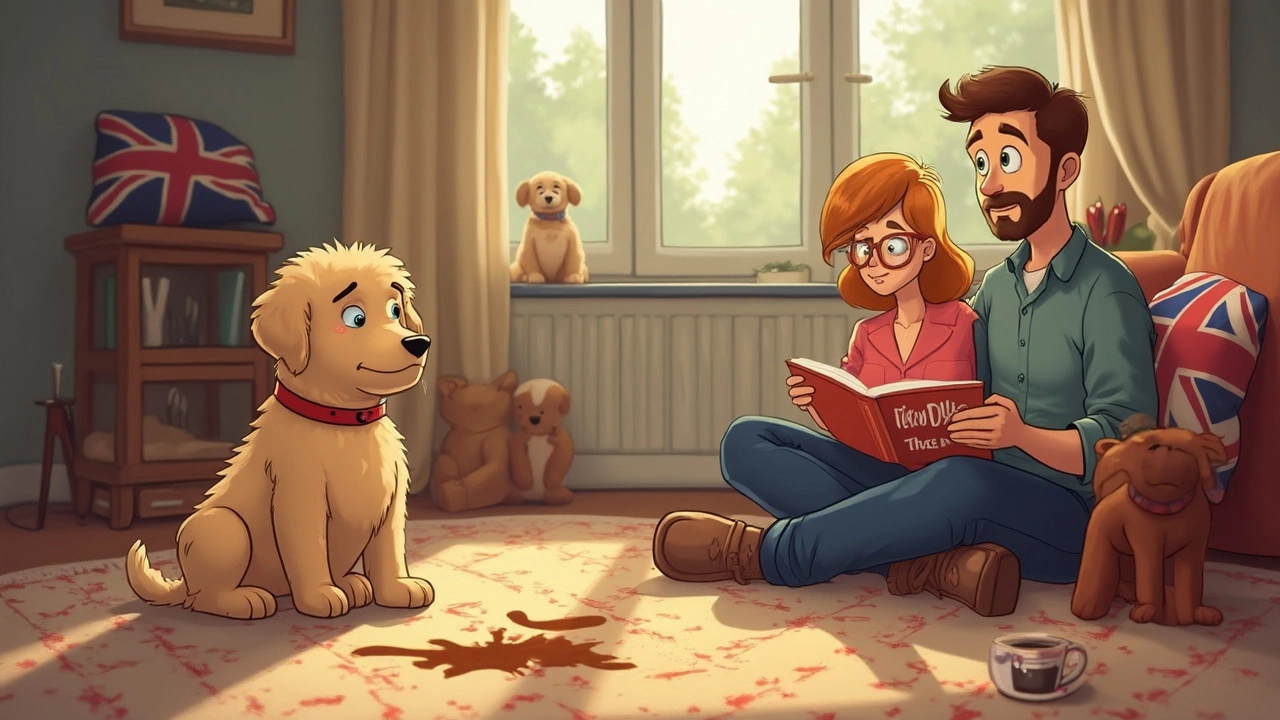
When to Worry (and What’s Actually Normal)
Every new puppy owner wonders, “Is my dog normal?” when accidents keep happening. Here’s the deal—most puppies aren’t perfect at potty training for the first few months. In fact, even the brightest pups can have a few slip-ups up to six months old, especially during big changes at home or with their daily routine.
How can you tell what’s just normal and what’s a potential problem? For most breeds, having minor accidents until five or six months is totally expected. But if your pup is going backwards—like suddenly having more accidents after making progress—that’s worth a closer look. Stress, illness, new people, or a change in food can throw them off. Sometimes, though, it’s a medical thing like a urinary infection or parasites, especially if you notice blood in the urine, super frequent accidents, or your dog seems in pain when going.
If you’re on week twelve and your puppy doesn’t seem to be catching on, don’t panic yet. But you’ll want to make sure you’re following a good training timeline and that your puppy isn’t being left alone too long. Here’s a quick comparison of normal progress:
| Puppy Age | Expected Number of Accidents |
|---|---|
| 2-3 months | Multiple per day |
| 4-5 months | 1-2 per day, sometimes zero |
| 6 months+ | Occasional, often rare |
Watch out for these signs that should make you call your vet or a trainer:
- Lack of improvement after a few months on a regular schedule
- Accidents paired with signs of illness (like vomiting, lethargy, blood, or whining)
- Regression after previously making progress, especially if you can’t link it to a big change at home
Most of the time, setbacks mean you need to fine-tune your routine, use rewards like puppy toys more often, or just stick it out. A healthy, well-trained puppy will get there—with a little patience, a lot of praise, and a strong cleaning spray for the floors.

